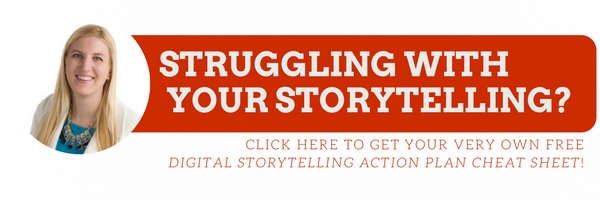
There is a misguided argument that I have heard recently from nonprofits, as they prepare their fundraising appeals or their online marketing campaigns:
There is no way we can pull the heartstrings like this when telling stories.
Or:
Oh no – we can’t use such strong language. We can’t make our supporters angry!
So, I ask – you don’t want make people inspired, or sad, or angry, or really excited? In other words, what you want to be is – BORING?
Boring = Death
In his fantastic book The Attention Merchants: The Epic Scramble to Get Inside Our Heads, Tim Wu writes:
Every instant of every day we are bombarded by information. In fact, all complex organisms, especially those with brains, suffer from information overload. Our eyes and ears receive lights and sounds (respectively) across the spectrums of visible and audible wavelengths; our skin and the rest of our innervated parts send their own messages of sore muscles or cold feet. All told, every second, our senses transmit an estimated 11 million bits of information to our poor brains, as if a giant fiber-optic cable were plugged directly into them, firing information at full bore.
Tying to compete and gain traction within that “giant fiber-optic cable” is our job as nonprofit communicators, advocates, and fundraisers.
Getting attention and piquing interest is our JOB. Getting people to our website, to sign up for our email list, to read our blog posts, to watch our Facebook videos – that’s what we do.
But we can’t do it if our messages are boring and inspire apathy or even worse… crickets.
People make thousands of decisions every single day. Think about how you use your computer, your phone, your other devices – they are constantly on, constantly pinging you, begging for your attention. (I have 25 open Google Chrome tabs right now!)
Emotion Is Key
Certain experts claim that “90 percent of all purchasing decisions are not made consciously” – that brands that play on our emotions always win our attention and our money.
For nonprofits, it can even be argued that emotion is even more important to getting people from passive to active.
One of my favorite marketing bloggers, Neil Patel, says that the job of all communicators, when trying to entice someone to take an action, is to do just three things:
- Understand what your audience needs and craves.
- Understand what drives them.
- Use this information to influence their behavior.
Simple, right? This is what the big business marketers are doing to your brain right now.
As nonprofits, how can we compete? We can compete by knowing our target audience inside and out.
The St. Baldrick’s Foundation uses a combination of inspiration and gratitude in their Facebook posts, but they are not afraid to tell their audience about the stark reality of dealing with childhood cancer, and elicit emotions of fear and sadness to compel people to action:
We need to know who we want to reach with our desired Call to Action (advocacy, sign up, donate) – and we need to deliver the right message to convey to get people to take action.
You certainly don’t use the same messaging to influence family members, co-workers, perfect strangers.
So why do many nonprofits think that all messaging is the same, and that bland and safe messages are best?
Give Me One Reason to Stay Here…
“Give me one reason to stay here, and I’ll turn right back around…” (Maybe I’m dating myself but I love that song.)
In communicating with your supporters, you have to understand their needs – those needs are more important than your organizational needs at the moment.
Yes, you want likes, shares, follows, clicks, donations, sign ups, you want and you want and you want… but what does your community want and need?
PETA understands that what pushes it’s supporters from passive to active is shocking them with graphic imagery of animal abuse – they don’t sugarcoat, and they don’t apologize:
Often, especially in the lighting speed world of online communications, we just need to give people a reason to pay attention.
If your cause and your issue is not in the news, if it’s not being discussed on a daily basis, then we need to understand why it’s important. And we need to convey that its important – that it WARRANTS ATTENTION.
Why is this relevant? Why now? Why here? What’s the hook?
And usually, for human beings, that hook is emotion.
And Again… With Feeling
Brass tacks – You need to elicit some kind of emotion in all of your communications with donors, supporters, and constituents.
Your readers are not “delicate snowflakes” (in fact, I loathe that term). Your tribe can handle realness.
Your supporters are passionate, motivated, resilient, and most importantly, interested in your cause and your issue!
They look to you to be a resource – to cut through the noise and clutter, and provide them with actionable strategies for creating change and ways to make a difference.
They look to you for stories, evidence of impact, and hope.
The Greater Boston Food Bank uses relatable individual stories of people and families who fell on hard times but are getting back on their feet:
In this culture of alleged “fake news” and “alternative facts”, it’s very hard to know what’s real and what’s propaganda.
With the firehouse of information turned on, it’s almost impossible to know what to prioritize and what to shut out.
Your supporters believe in your work and your organization. If they have signed up for your email list, they want to know more.
If they have given you their hard-earned money, they trust you to provide them with evidence that they did the right thing – that you are the organization to support.
Nonprofits cannot feel entitled to this attention, to this trust. We must steward it carefully, and we must cultivate it with emotional stories of our impact.
Emotion wins, every single time. Find a way to incorporate emotional stories into your communications, or you run the risk of getting ignored.
And in the world of online communications, getting ignored is the worst thing to be.
Do you need a step-by-step guide to creating digital storytelling campaigns?
You are in luck!
Sign up and get a free chapter of my new book, Storytelling in the Digital Age: A Guide for Nonprofits. This book is designed to be a step-by-step how-to guide for small and mid-size nonprofits that want to learn how to set goals, measure results, and carry out amazingly successful digital storytelling campaigns!
When you sign up, you will also receive my free weekly bulletin with tips, tricks, and advice for savvy nonprofits on how to kick butt at online marketing and fundraising.

Comments 2
Love this Julia. Such passion and energy reminding us to be authentic and use our story for purpose.
Author
Thank you so much Christiana! Purpose and passion are everything!